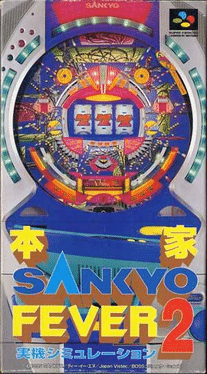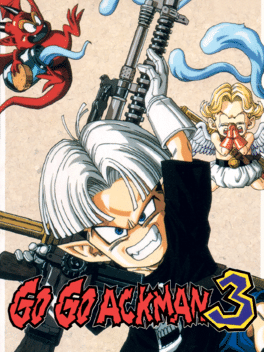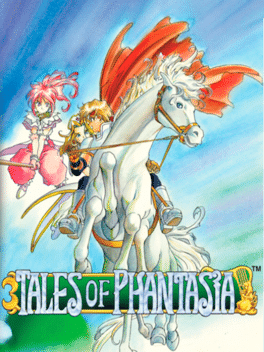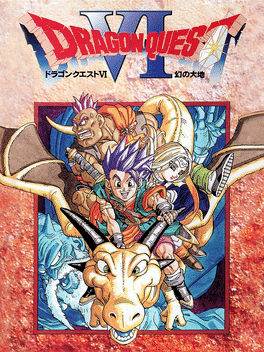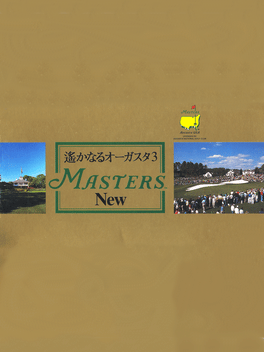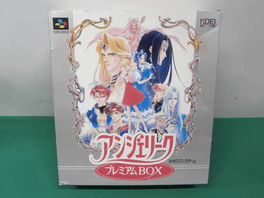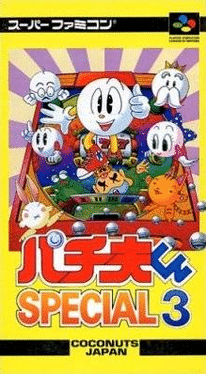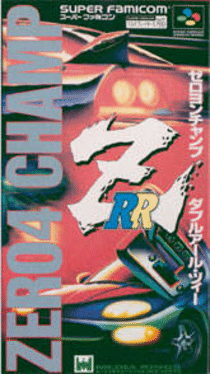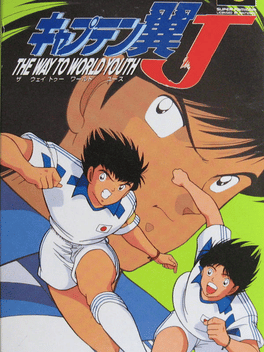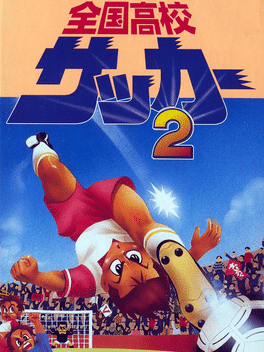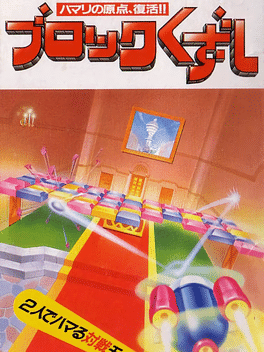New Super Famicom Games - Page 11
-
Princess Maker: Legend of Another World
1995
Princess Maker: Legend of Another World is a Strategy game, developed by Gainax and published by Takara, which was released in Japan in 1995. A revamped and remade version of Princess Maker 2, exclusively for the SNES. -
Nichibutsu Arcade Classics 2: Heiankyo Alien
1995
An upgraded version of the arcade classic Heiankyo Alien, with the original included. -
JB: The Super Bass
1995
-
Honke Sankyo Fever: Jikki Simulation 2
1995
Honke Sankyo Fever Jikki Simulation 2 is a Miscellaneous game, developed by Vistec and published by Boss Communications, which was released in Japan in 1995. -
Go Go Ackman 3
1995
Go Go Ackman 3
1995
Go Go Ackman 3 is an Action game, developed by Aspect and published by Banpresto, which was released in Japan in 1995. It is the third and final Go Go Ackman game for the Super Famicom. This is the first game in which the series Nemesis, Tenshi, is playable. But due to the fact that Tenshi is an angel he will not collect the souls of the enemies. Go Go Ackman was created by famous mangaka Akira Toriyama, known for his work on Dragon Ball as well as games such as Chrono Trigger and Dragon Quest. -
Tales of Phantasia
1995
Tales of Phantasia
1995
star 7.4Tales of Phantasia is the first installment of the Tales series, and was released by Namco in 1995 for the Super Famicom. Released at the end of 1995, Tales of Phantasia is considered one of the crowning achievements for its time. It has graphics that push the console to its limits, an original never-before-seen battle system, and the addition of actual voices and voice actors. It is also the first and only Super Famicom game to feature an entirely original, vocalized theme song featured directly in the game. -
Dragon Quest VI: Maboroshi no Daichi
1995
star 7.9Dragon Quest VI is the sixth installment in the Dragon Quest series. It is the penultimate title for the Nintendo Super Famicom as well as the last game in the Zenithia trilogy, and the first game in the series to be developed by Heartbeat, rather than Chunsoft. Like every other Dragon Quest game, the setting in Dragon Quest VI is very medieval, complete with castles, knights, and magic. The main world is divided into the Lower World and the Upper World, each with a separate but similar map. To get from one world to the other, the party uses special warps (such as in wells) or by ascending/descending colossal stairs on the world map. -
Super Momotaro Dentetsu DX
1995
A board game based around trains and railroads and part of Hudson's long-running Momotaro Dentetsu series. -
Harukanaru Augusta 3: Masters New
1995
Harukanaru Augusta 3: Masters New is a Sports game, developed and published by T&E Soft, which was released in Japan in 1995. -
Bishoujo Senshi Sailor Moon Super S: Fuwa-fuwa Panic
1995
Bishoujo Senshi Sailor Moon Super S: Fuwa-fuwa Panic ("Pretty Soldier Sailor Moon Super S: Floating Panic") is a puzzle game licensed by Bandai that features the various Sailor Guardians, including the new "super" transformations of Usagi Tsukino (Sailor Moon) and Chibi-usa (Sailor Chibi Moon) that debuted in the "Super S" season, which was the name of the fourth season of the anime adaptation. -
Pachio-kun Special 3
1995
Pachio-kun Special 3
1995
Pachio-kun Special 3 is a Miscellaneous game, developed by Marionette and published by Coconuts Japan, which was released in Japan in 1995. -
Zero-4 Champ RR-Z
1995
Zero-4 Champ RR-Z
1995
A drag racing game based on the illegal "zero-4" street race. The second of two Super Famicom games in the series. -
Naruhodo! The World
1995
Naruhodo! The World
1995
Naruhodo! The World is a Miscellaneous game, published by Tomy Corporation, which was released in Japan in 1994. -
Kishin Douji Zenki: Denei Raibu
1995
Licensed Super Famicom anime game that features two distinct modes: an active time battle RPG combat mode and a 2D side-scrolling platformer. -
Captain Tsubasa J: The Way to World Youth
1995
The fourth and last Captain Tsubasa game released on the Super Famicom. Takes its inspiration from a sequel anime series released in the 90s rather than the 80s original. -
Zenkoku Koukou Soccer 2
1995
Zenkoku Koukou Soccer 2 is a Sports game, developed by Syscom and published by Yojigen, which was released in Japan in 1995. -
Block Kuzushi
1995
-
Zengoku Juudan Ultra Shinri Game
1995
A spin-off of Visit's Shinri Game quiz series that frames its probing questions with a geographical TV quiz show. Zengoku Juudan Ultra Shinri Game ("National Longitudinal Slice Ultra Psychology Game", referring to how the in-game game show selects a region for a question by picking its longitude) is a quiz show for the Super Famicom that opts for questions of a more personality-test nature. With every Shinri Game, these questions are presented with a distinct framing device: in Zengoku Juudan's case, the game is presented as if it was a TV game show that pulls its questions from specific regions and prefectures of Japan. It follows three previous Shinri Games for the system, but isn't a true sequel - The Shinri Game IV, released on PlayStation in 1998, is the "true" fourth The Shinri Game. -
Hissatsu Pachinko Collection 3
1995
Hissatsu Pachinko Collection 3 is a Miscellaneous game, published by SunSoft, which was released in Japan in 1995.



